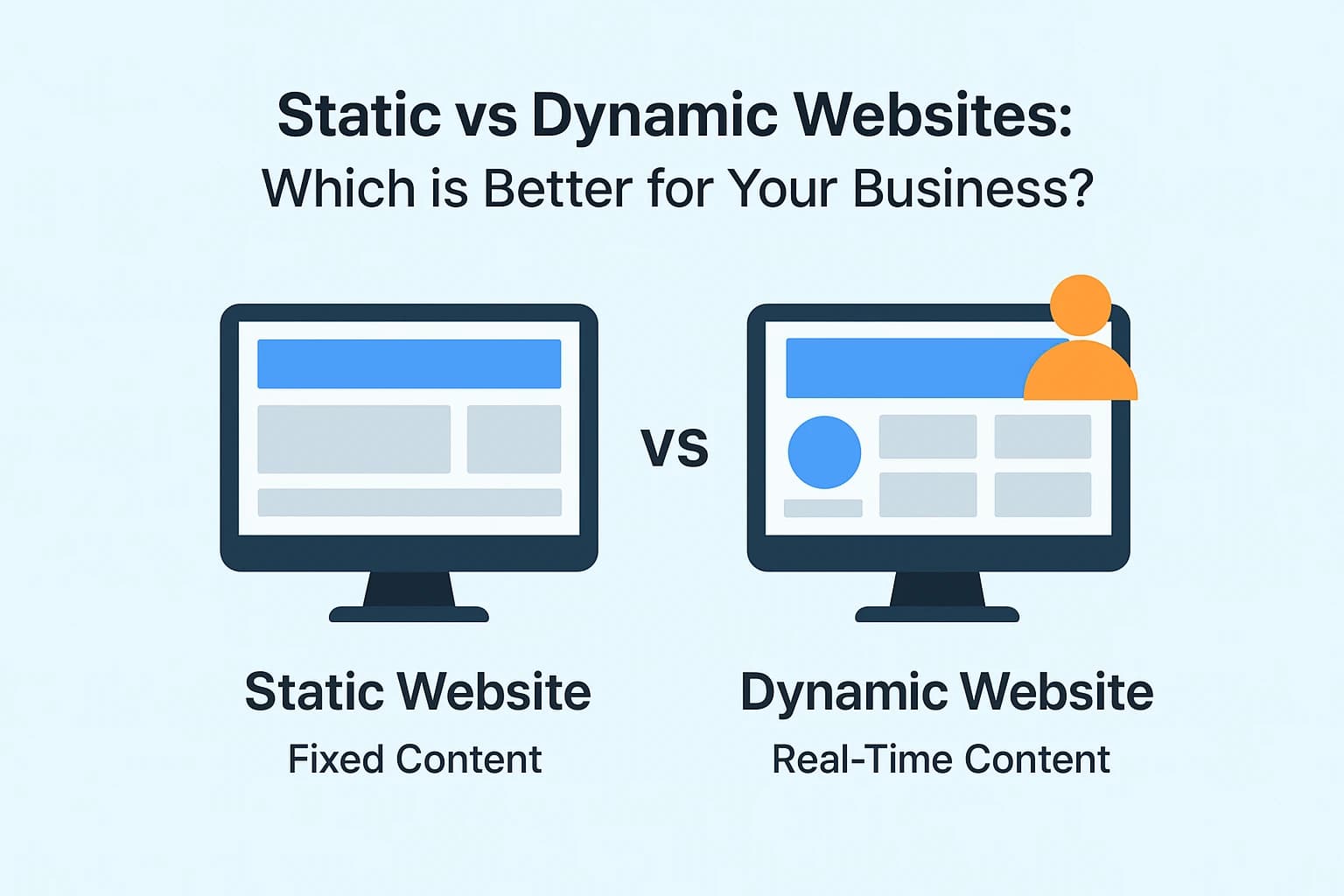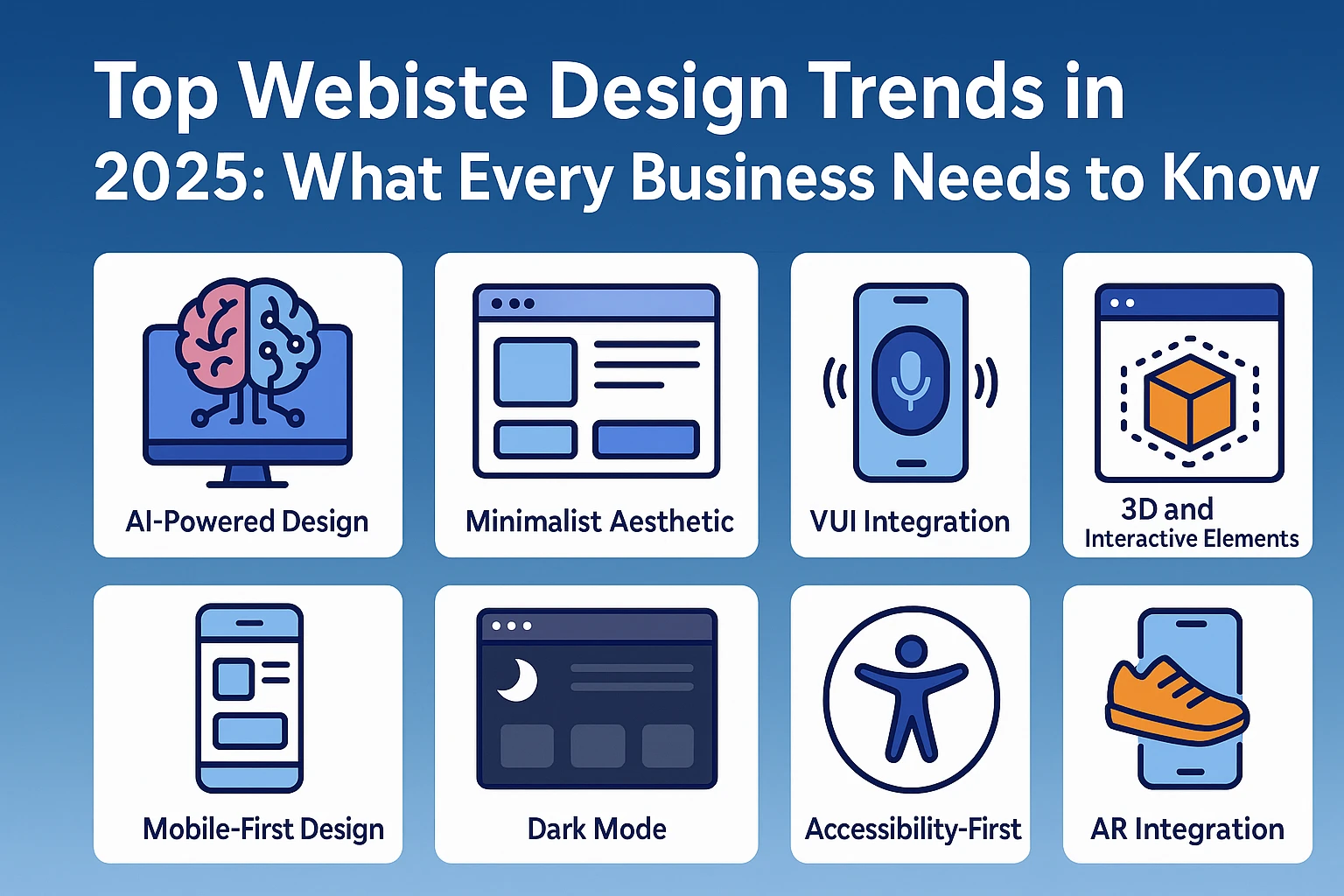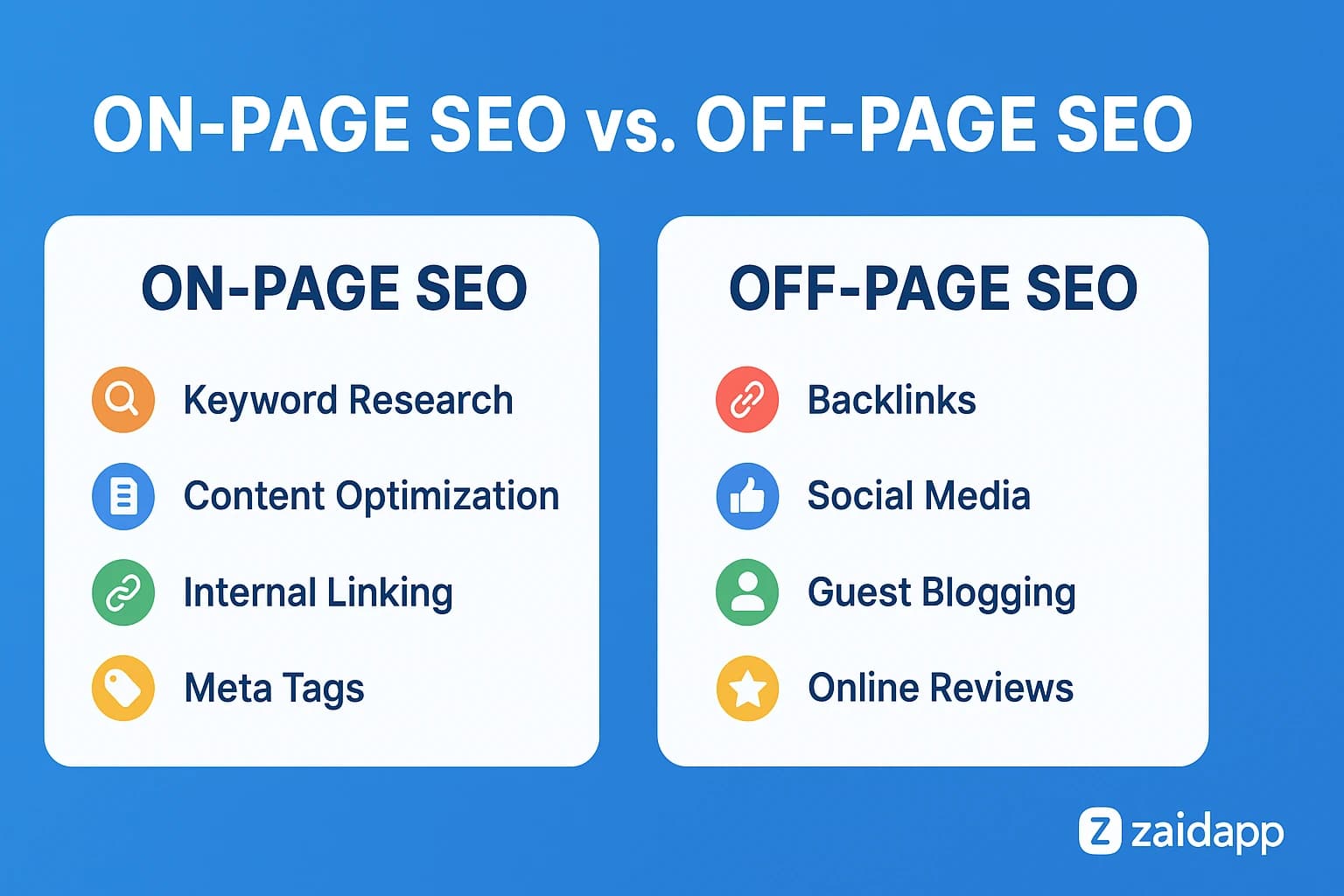Loading

In today’s digital-first world, a website is more than just an online presence it’s your brand’s storefront, marketing tool, and customer service representative all rolled into one. When building or revamping a site, one of the most crucial decisions is whether to go static or dynamic.
Each approach has unique benefits, limitations, and ideal use cases. The wrong choice could lead to wasted resources, slow performance, and poor SEO — while the right choice could boost engagement, conversions, and long-term scalability.
Let’s dive deep into the static vs dynamic website debate to help you choose the right solution for your business.
A static website is composed of fixed HTML, CSS, and JavaScript files stored on a server. Each visitor sees the same pre-built content, with no database or server-side scripting involved.
Portfolio websites
Landing pages
Company info pages
Event announcements
Brochure-style sites
Lightning-fast load times — No server processing needed.
High security — Fewer vulnerabilities without server-side scripts.
Cost-effective — Lower hosting and maintenance fees.
SEO-friendly — Simple HTML structure for search engines to crawl.
Difficult content updates — Changes require manual code editing.
Limited interactivity — No dynamic user interactions without additional tools.
Not ideal for content-heavy sites — Large sites can be time-consuming to maintain.
A dynamic website generates content in real-time, often pulling information from a database. Pages can change based on user behavior, preferences, or other factors.
E-commerce stores
News portals
Social networking sites
Membership platforms
Custom web applications
Easy content management — Update through a CMS like WordPress.
Highly interactive — Personalization, user accounts, and real-time features.
Scalable — Add new pages or features without major code overhauls.
Slower performance — Server processing can delay load times.
Higher security risks — Vulnerabilities in databases or server scripts.
More expensive — Requires more complex development and hosting.
Feature | Static Website | Dynamic Website |
|---|---|---|
Speed | Very fast | Slower due to server processing |
Maintenance | Manual updates | Easy with CMS |
For small businesses, the choice between static and dynamic websites often comes down to budget, content needs, and user engagement goals.
If you need a simple, fast, and affordable online presence with minimal updates, a static website is often the best choice.
If your business relies on frequent updates, customer interactions, or e-commerce, a dynamic website offers the necessary flexibility.
Many small businesses start with static sites for cost savings, then transition to dynamic platforms as they grow.
Static websites are quicker and cheaper to develop.
Dynamic websites require a larger initial investment but offer easier updates over time.
Frequent updates (e.g., blogs, news, inventory) benefit from dynamic systems.
Rarely updated sites work well as static.
If you need user logins, shopping carts, or personalized experiences, dynamic is the way to go.
Static websites have fewer entry points for hackers.
Dynamic websites need stronger security protocols and regular monitoring.
Static Example: A photographer’s portfolio site — minimal updates, fast loading, and visually appealing.
Dynamic Example: An online clothing store — product pages update in real-time, and users can create accounts, track orders, and receive personalized recommendations.
Optimize HTML tags for keyword relevance.
Use a CDN to boost loading speed globally.
Compress images to improve performance.
Leverage clean URLs for better indexing.
Enable caching to speed up page loads.
Optimize database queries to reduce server lag.
Implement structured data for richer search results.
Ensure mobile responsiveness for ranking boosts.
A hybrid site uses static pages for core content and dynamic pages for interactive features. For example:
Static homepage & about page
Dynamic blog & e-commerce section
This approach offers speed and security benefits without sacrificing interactivity.
There’s no universal winner in the static vs dynamic websites debate — it all depends on your goals.
Choose Static if you value speed, security, and cost-effectiveness.
Choose Dynamic if you need scalability, frequent updates, and rich user interactions.
Many successful businesses use a combination to maximize benefits.
Choosing between static and dynamic websites is one of the most important early decisions in web development. By weighing factors like budget, interactivity, update frequency, and security, you can build a site that supports your business growth — now and in the future.
 Previous Post
Previous PostDiscover the top website design trends in 2025. Learn how modern website design can boost UX, SEO, and engagement. Stay ahead with our expert guide.
 Next Post
Next PostDiscover the pros and cons of custom software development vs off-the-shelf solutions. Learn key differences, cost factors, scalability.
Please login to post a comment
No comments yet. Be the first to comment!

10/4/2025

9/5/2025

9/16/2025

10/14/2025

10/31/2025